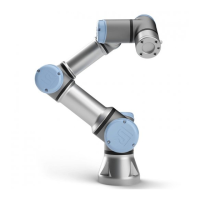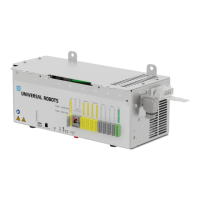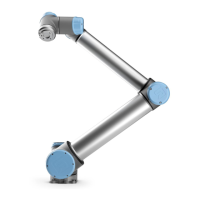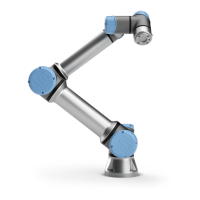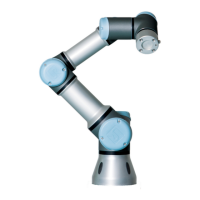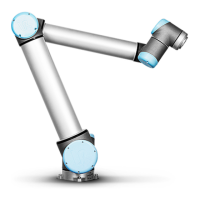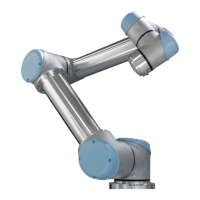2.5 Safety-related Electrical Interfaces
2.5 Safety-related Electrical Interfaces
The robot is equipped with several safety-related electrical inputs and outputs. All
safety-related electrical inputs and outputs are dual channel. They are safe when
low, e.g. the emergency stop is not active when the signals are high (+24V).
2.5.1 Safety-related Electrical Inputs
The table below gives an overview of the safety-related electrical inputs.
Safety Input Description
Robot Emergency Stop (Dedicated Input). Performs a Stop Category 1, which
can be forwarded to other machines using the System
emergency stop output when configured.
Emergency Stop Button (Teach Pendant Button). Performs a Stop Category 1,
which can be forwarded to other machines using the
System emergency stop output when configured.
System Emergency Stop (Configurable Input). Performs a Stop Category 1. To
avoid deadlocks, this signal will not be forwarded to
other machines through the System emergency stop out-
put.
Safeguard Stop (Dedicated Input). Performs a Stop Category 2.
Safeguard Reset (Configurable Input). Resumes the robot from a Safe-
guard stopped state, when an edge on the Safeguard re-
set input occurs.
Reduced Mode (Configurable Input). The safety system transitions to
Reduced mode limits.
3-Position Switch (Configurable Input). Functions as a safeguard stop in-
put when the operational mode input is high.
Operational Mode (Configurable Input). Operational mode to use when a
3-position enabling device is configured.
A Stop Category 1 and a Stop Category 2 decelerates the robot with drive power
on, which enables the robot to stop without deviating from its current path.
Monitoring of safety inputs Stop Category 1 and Stop Category 2 are monitored
by the safety system in the following way:
1. The safety system monitors that the braking initiates within 24 ms, see Fig-
ure 2.2.
2. If a joint is moving, its speed is monitored to never be higher than the speed
obtained by constantly decelerating from the maximum joint speed limit for
Normal mode to 0
rad
/s in 500 ms.
3. If a joint is at rest (joint speed is less than 0.2
rad
/s), it is monitored that it does
not move more than 0.05 rad from the position it had when the speed was
measured below 0.2
rad
/s.
Additionally, for a Stop Category 1, the safety system monitors that after the robot
arm is at rest, the powering off is finalized within 600 ms. Furthermore, after a
Version 3.4.5
Copyright © 2009–2017 by Universal Robots A/S. All rights reserved.
I-15 UR5/CB3

